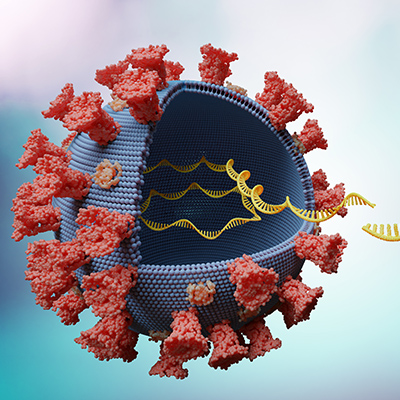July 2, 2020 -- Could the race to develop a vaccine for SARS-CoV-2 be sped up if researchers were able to study the virus in healthy individuals? And how could such research be conducted safely? These questions were covered in an article published July 1 in the New England Journal of Medicine.
The use of controlled human infection models (CHIMs) to support SARS-CoV-2 vaccine development was discussed in the article, which was authored by members of the Accelerating COVID-19 Therapeutic Interventions and Vaccines (ACTIV) Vaccines Working Group at the U.S. National Institutes of Health (NIH).
The research community's accelerated response to the COVID-19 pandemic includes significant investments in preclinical and clinical testing, as well as in the manufacture of a variety of vaccine candidates. In comparison to traditional vaccine development, which progresses from preclinical to clinical phases and then on to vaccine licensure and subsequent large-scale production, current efforts are working to compress timelines by overlapping stages of the development process. Importantly, these development plans represent a standard for evaluation of vaccination efficacy.
CHIMs could be a way to accelerate vaccine development even further. CHIMs require infecting healthy individuals to study pathogenesis, characterize immune responses, and evaluate vaccine efficacy. They are often controversial due to the risk associated with purposeful infection of humans with SARS-CoV-2 when there are no reliable treatments for COVID-19. Therefore, the use of CHIMs must be justifiable and capable of providing scientific answers to the global pandemic.
CHIMs are beneficial in vaccine development programs because they have the potential to reduce the overall number of participants needed to evaluate vaccines. CHIMs studies need to be highly controlled in order to determine the precise timing of infection and the ability to measure immune responses at predetermined time points. Also, CHIMs could determine duration of immunity conferred by vaccines in parallel to field studies.
In the current article, the NIH's ACTIV working group explained that CHIMs studies must ensure that procedures minimize risk to participants, staff, and community and that studies are rigorously designed to provide robust scientific data.
The authors proposed that the development of a SARS-CoV-2 good manufacturing practice challenge stock with attenuating mutations to mitigate risk would be optimal, although it would increase development time. Ideally, a rescue therapy should be available to counteract unexpected severe illness that can occur, even in well-established CHIMs. Using this model, the authors suggested that development of a robust challenge model for testing of SARS-CoV-2 vaccines may take up to one or two years.
Given that several vaccine candidates are soon to enter phase III clinical trials, CHIMs are unlikely to accelerate the establishment of SARS-CoV-2 vaccine efficacy. However, the authors noted that CHIMs could aid in the development of later rounds of vaccine candidates.
The authors also advocated for the development of seasonal coronavirus CHIMs. Because these coronaviruses do not cause illness that is as severe as that caused by SARS-CoV, MERS-CoV, or SARS-CoV-2, challenge studies would have favorable risk profiles. Moreover, the in-depth characterization of immune response may provide essential insights into more pathogenic coronaviruses, such as SARS-CoV-2.
Do you have a unique perspective on your research related to vaccine development or infectious diseases? Contact the editor today to learn more.
Copyright © 2020 scienceboard.net









